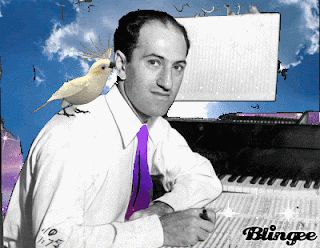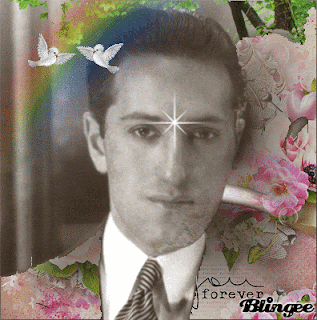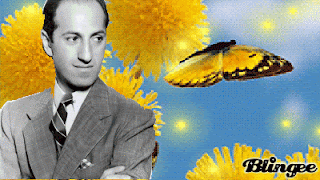The 6,000-item collection spans nearly the entire length of his 55-year career, and many items have never been seen before
Bob Dylan has sold his personal archive of notes, draft lyrics, poems, artwork and photographs to the University of Tulsa, where they will be made available to scholars and curated for public exhibitions, the school said on Wednesday.
The 6,000 item collection spans nearly the entire length of Dylan’s 55 year-long career, and many have never been seen before. The collection was acquired by the George Kaiser Foundation and the University of Tulsa in Oklahoma.
The 6,000 item collection spans nearly the entire length of Dylan’s 55 year-long career, and many have never been seen before. The collection was acquired by the George Kaiser Foundation and the University of Tulsa in Oklahoma.
The collection also includes master recording tapes of Dylan’s entire music catalogue, along with hundreds of hours of video.
The foundation and the university did not say how much the Bob Dylan archive cost, but the New York Times, which was given an exclusive preview, said it was sold for $15m to $20m.
Tulsa is also the home of a museum dedicated to folk singer Woody Guthrie, one of Dylan’s early influences.
“I’m glad that my archives, which have been collected all these years, have finally found a home and are to be included with the works of Woody Guthrie ... To me, it makes a lot of sense and it’s a great honor,” Dylan said in a statement.
Despite being regarded as “the voice of a generation” for his influential songs of the 1960s and 1970s, Dylan, now 74, has mostly kept his items out of the public eye, resulting in high prices when they occasionally come up for auction.
A handwritten copy of the song Like a Rolling Stone sold for a record $2m at a New York auction in 2014, while the electric guitar he played during the 1965 Newport folk festival sold for nearly $1m in 2013.
The archives handed over to the University of Tulsa include two notebooks with lyrics from the 1975 album Blood on the Tracks, and Dylan’s handwritten lyrics to his 1964 song Chimes of Freedom scrawled on hotel notepaper dotted with cigarette burns. There is also correspondence between Dylan and the late beat poet Allen Ginsberg.
The archives handed over to the University of Tulsa include two notebooks with lyrics from the 1975 album Blood on the Tracks, and Dylan’s handwritten lyrics to his 1964 song Chimes of Freedom scrawled on hotel notepaper dotted with cigarette burns. There is also correspondence between Dylan and the late beat poet Allen Ginsberg.
BLOGGER'S NOTE. This report is incomplete. Having made only $20 million on the old papers he had lying around, Bob Dylan decided to clean all the old junk out of his closets and see what he could get for it.
The items were sold at auction at undisclosed prices.
ITEM 476
Bob Dylan's first school assignment, an untidily-written poem called It's A Hard Rain's Gonna Fall, given a C+ for effort.
The items were sold at auction at undisclosed prices.
ITEM 476
Bob Dylan's first guitar. Formerly displayed in Smithsonian as First Guitar in Human History. List price, $4,000,000.00
ITEM 14
Bob Dylan's hairpiece, hitherto kept secret from the public. List price, $4.79
ITEM 14A
Bob Dylan's first school assignment, an untidily-written poem called It's A Hard Rain's Gonna Fall, given a C+ for effort.
ITEM 479
Bob Dylan's first girlfriend Minnie Zota, a resident of Shadylady Nursing Home, Red Hen, Rhode Island. List price, negotiable.
ITEM 37
Bob Dylan's first set of encyclopedias, sold door-to-door to his neighbor Manny Manheim, borrowed in 1957 and never returned. List price, whatever the list price was in 1957.
ITEM 53
Bob Dylan's horse, Spaghettineck. Taxidermied and mounted on wheels in 1982. List price, pretty high.
ITEM 2
Bob Dylan's dog, Spoons. List price $5,000,000.00. Cupcakes not included.
ITEM - ?

Bob Dylan's second school assignment, also known as "You've Improved!' List price, seven cents or so.
ITEM 1
Unidentifiable artifact. Extremely rare. Speculation suggests an egg slicer which was used as a rack for curing marijuana. May also be the world's only combination banjo/water canteen.
PHOTO GALLERY. These represent rare, historic photos which chart the course of the illustrious Mr. Dylan's life in music and momentous world affairs. For these he will take a buck apiece.
Bob Dylan's class picture. He has just sneezed in the photo and spread a cloud of lethal disease throughout the school, killing many.
Artist's rendition of Bob after each of his first four music lessons. The artist, Hibbie Zimmerman, was quoted as saying, "There will always be a little bit of ape left in Bobby."
Bob's first high school band, the Ramblin' Rockets. Also known as the Jumpin' Jeronimos, the Hibbing Hoot-owls, the Gymbusters, Zimbo and the Zeitgeist, and The Two Tops.
Bob's favourite picture of his sometime girlfriend/goddess/priestess/sponge-off partner/ice-maiden/coat-tail queen, Joan Baez. Shortly after this photo was taken she dedicated a song to him, "Nothing Rhymes with Genius (that's why you treat me so badly)". Later she complained that the diamond he gave her had turned to rust.
Gerry Mathers in an unsold pilot for a TV series, Leave it to Bob.
Bob Dylan's second high school band, which Bob admits were "pretty green". Bob never named this group, but they were known around Hibbing Collegiate as "Those Guys Again".
Bob's first copyright infringement notice. (He said a buck apiece. OK?)
MISCELLANY.
Bob Dylan's socks. May contain traces of his DNA.
Bob Dylan's fox. No one knows how to get it down from there.
Bob Dylan's garbage can. Suitable for framing. (Note: monetary accessories not included.)




























































